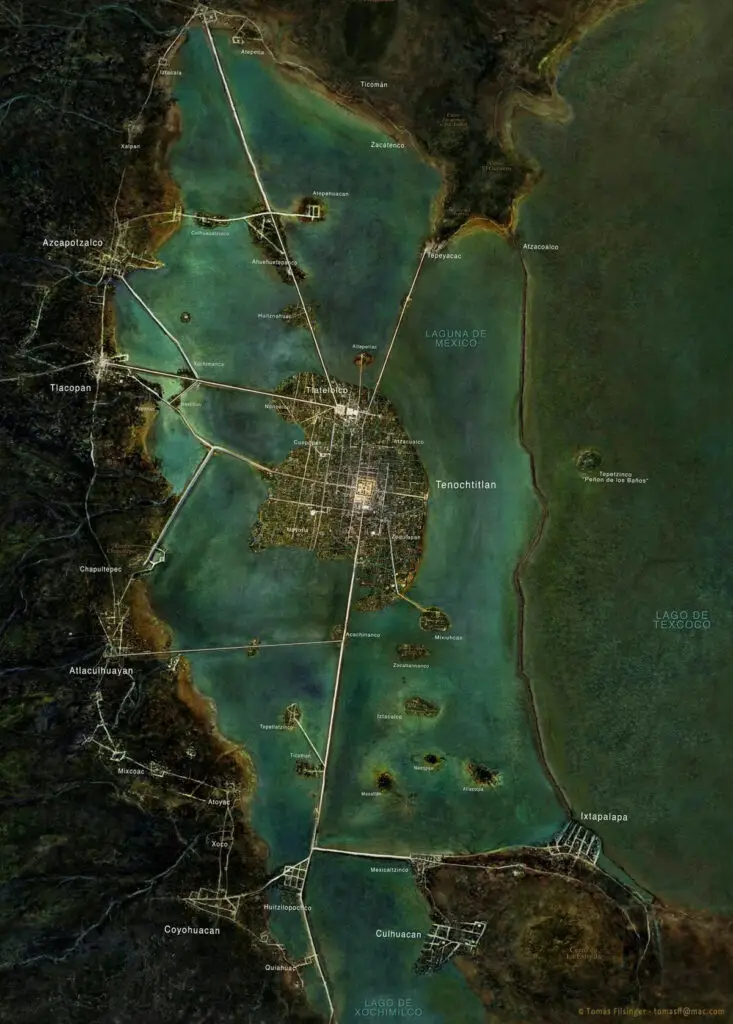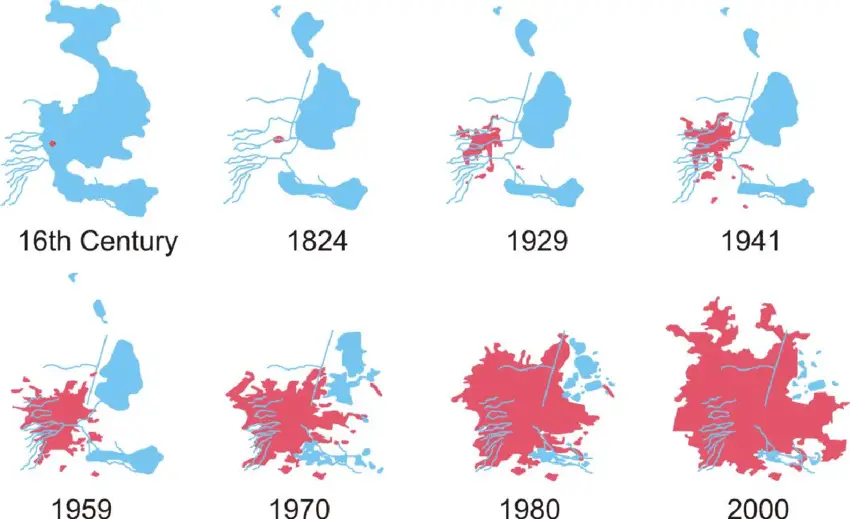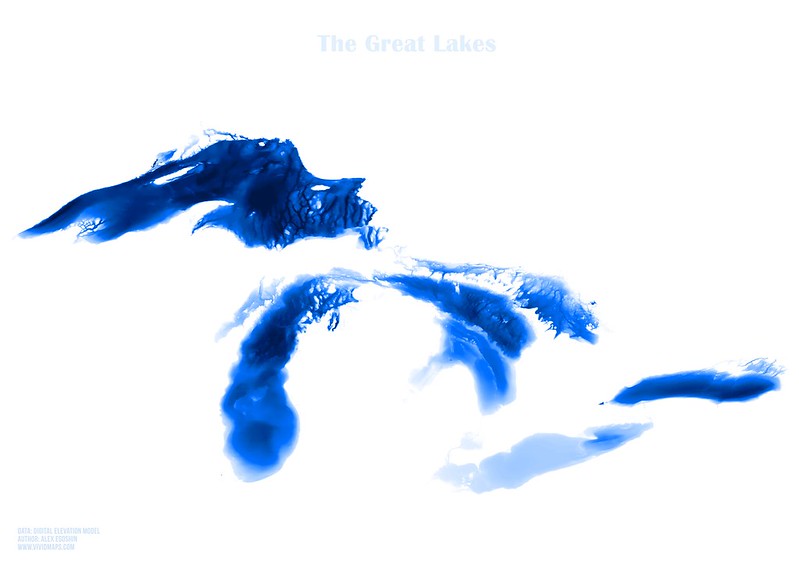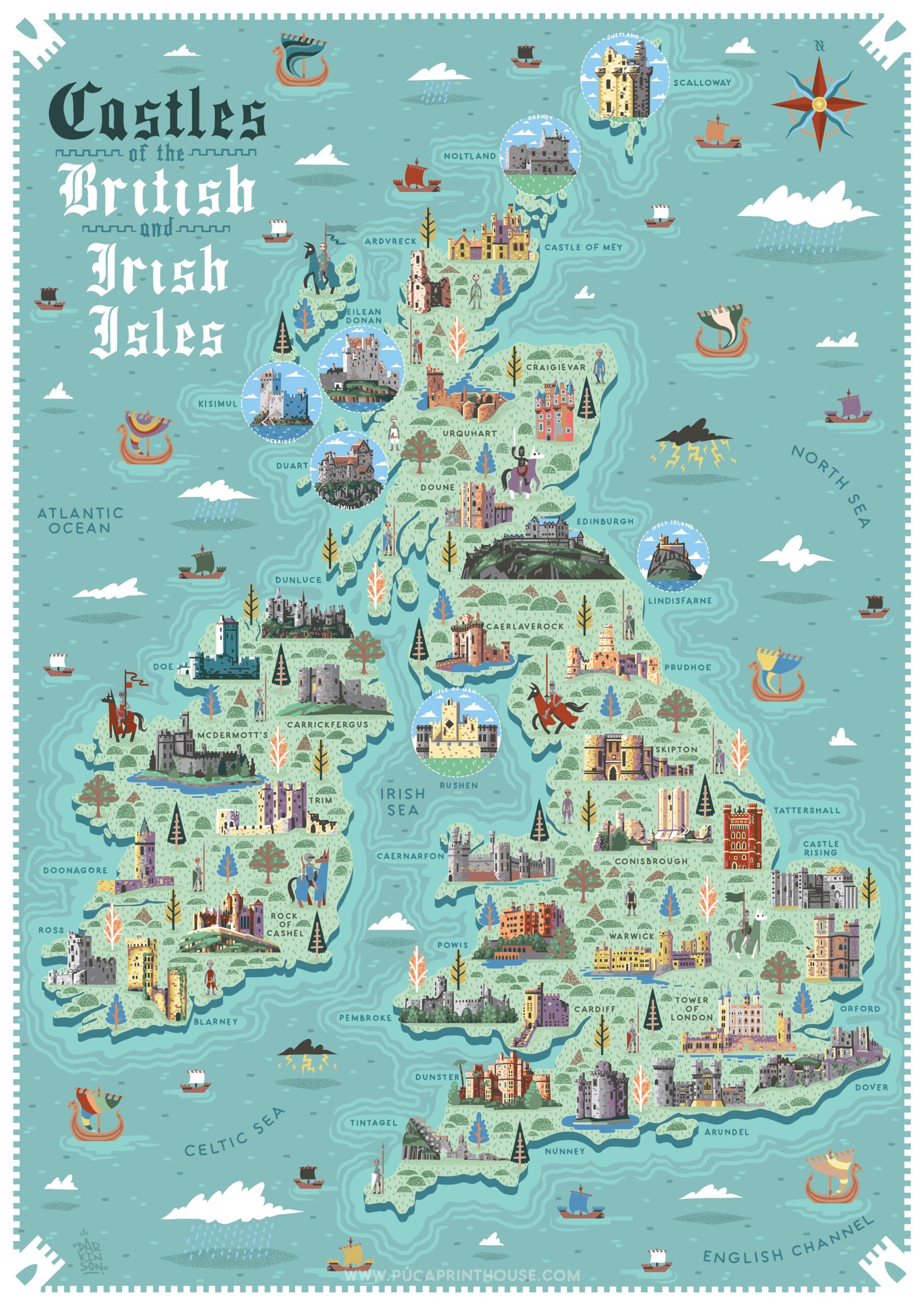Tenochtitlan (Mexico City) in the 14th Century
Tenochtitlan, the capital of the Aztec Empire, was a magnificent and advanced city in the 14th century. Situated on an island in Lake Texcoco in the Valley of Mexico, the city was known for its impressive architecture, complex network of canals and causeways, and thriving markets. The layout of Tenochtitlan featured wide avenues and canals, making it a unique urban center of its time. At its heart stood the Templo Mayor, a massive pyramid dedicated to the god Huitzilopochtli, adorned with intricate stone carvings and sculptures. Nearby was the Templo de Tlaloc, honoring the rain god Tlaloc.

The city’s economy was driven by bustling markets like the Tlatelolco Market, where goods from across the empire were traded, showcasing a wide range of products, from food to textiles and precious metals. The city’s architecture included houses made of adobe and thatch, with nobility residing in larger homes with courtyards and gardens.
For centuries, the Valley of Mexico featured a network of rainwater lakes interconnected by causeways, canals, and floating gardens, rendering Tenochtitlan akin to the Venice of Mesoamerica.
However, the arrival of Spanish conquistador Hernán Cortés in the early 16th century marked a turning point for Tenochtitlan. After a prolonged siege, the city was captured by the Spanish in 1521. They systematically dismantled the city and repurposed its materials to build the foundations of what would become Mexico City, the capital of New Spain.
The Spaniards restructured the city into a modern grid layout. Nevertheless, this redesigned metropolis faced recurring flooding issues, prompting endeavors to desiccate the once-lake-filled basin. Gradually, Tenochtitlan city drained the lakes and expanded across the now arid lakebed.

Over the centuries, Mexico City expanded and evolved, taking on a European colonial character while erasing many traces of Tenochtitlan’s original layout. The ancient landmarks of the Aztec city were obscured beneath the urban development of the modern capital.
Despite this transformation, some ancient landmarks can still be seen in present-day Mexico City:
- Templo Mayor: The Templo Mayor archaeological site is one of the most prominent ancient landmarks. Excavations have uncovered parts of the original temple, and a museum on-site displays artifacts from the Aztec period.
- Great Temple Museum: This museum provides valuable insights into the history and culture of Tenochtitlan and houses a remarkable collection of objects recovered from the Templo Mayor site.
- Zócalo: Mexico City’s main square, known as the Zócalo, occupies a central place in the city, much as it did in Aztec times.
- Xochimilco: While not within the city center, Xochimilco, a district of Mexico City, retains some ancient chinampas (floating gardens) and preserves traditional Mexican culture.
These ancient landmarks offer a glimpse into the rich history of Tenochtitlan, allowing visitors to connect with the city’s Aztec past amid the bustling urban landscape of Mexico’s capital.
You can delve deeper into Tenochtitlan and Aztec history by exploring the following books:
- Fifth Sun: A New History of the Aztecs
- The Aztec Empire: An Enthralling Overview of the History of the Aztecs, Starting with the Settlement in the Valley of Mexico (Ancient Mexico)
- The Death of Aztec Tenochtitlan, the Life of Mexico City (Joe R. and Teresa Lozano Long Series in Latin American and Latino Art and Culture)









Thank you for this very important view of Tenochtitlan with the changing water lake levels. I would like to reproduce this image in a book about Latin American history. Would this be possible? Could you please provide me with the desired citation?